#religious history
Text
I digitally painted St. Joan of Arc because I was bored and that means I nerd out about history
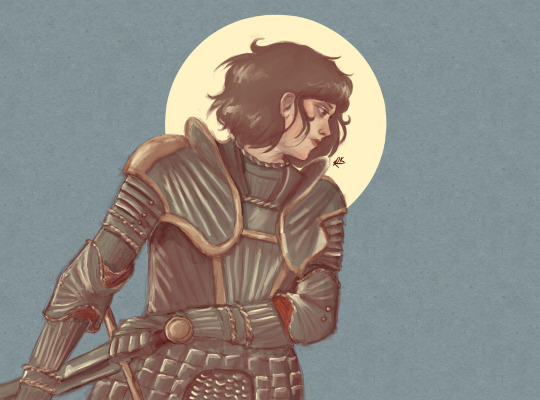
I just wanted to remind everyone that 15th century French Armor is THE prettiest example of medieval armor
#st joan#st joan of arc#joan of arc#jeanne d'arc#history#historical art#my art#digital art#art#realism#15th century#French armor#french history#religious art#religious history#medieval#medieval times#saint joan#saint joan of arc#france
175 notes
·
View notes
Text
Time Travel Question : Medievalish History 8 and Earlier
These Questions are the result of suggestions from the previous iteration.
This category may include suggestions made too late to fall into the correct earlier time grouping. Basically, I'd already moved on to human history, but I'd periodically get a pre-homin suggestion, hence the occasional random item waaay out of it's time period, rather than reopen the category.
In some cases a culture lasted a really long time and I grouped them by whether it was likely the later or earlier grouping made the most sense with the information I had. (Invention ofs tend to fall in an earlier grouping if it's still open. Ones that imply height of or just before something tend to get grouped later, but not always. Sometimes I'll split two different things from the same culture into different polls because they involve separate research goals or the like).
Please add new suggestions below if you have them for future consideration. All cultures and time periods welcome.
#Neolithic#Anatolian#Ancient World#Bible#Isaiah#Prophets#Phoenicians#Proto-Ancient Religion#Pre-Mamluk#Hinduism#History of Religion#History of India#Middle Ages#Religious History#The Pictish Beast#Picts#History of Music#Cathedrals#1000 BCE#Ancient Israel#Slavic People#100 BCE#Petroglyphs#Paleolithic
55 notes
·
View notes
Text




Sean bienvenidos mis queridos fanáticosarqueológicos a una nueva entrega de prehistoria Japónesa en esta ocasión nos trasladamos a la pregunta ¿Cuándo se originó el sintoísmo?.
-
Aunque parezca raro es una religión que se conformo durante el periódo Jōmon (17.500-300), para ser exactos a finales de dicho período y continua hasta nuestros días los dioses del sintoísmo, se les llama Kamis ( dios) ya que para los japoneses todo tenía un dios las montañas, ríos.
-
El sintoísmo tiene influencias chinas, coreanas de hay que tenga similitudes con el taoísmo, ¿Qu�� dos libros recogen la categoría de los Kamis? Son el Kojiki(713d.c) y el Nihonshoki(720d.c).
-
Espero que os guste y nos vemos en una próxima públicacion un cordial saludo.
🇯🇵
私の愛する考古学ファンを日本の先史時代の新作に歓迎します。今回は、神道がいつ始まったのかという質問に移ります。
-
奇妙に思えるかもしれませんが、縄文時代(17500-300)に形成された宗教であり、正確にはその時代の終わりに、今日まで神道の神であり、カミス(神)と呼ばれています。 日本人にとって、山や川にはすべて神がいました。
-
神道は中国、韓国の影響を受けており、道教との類似点があります。 カミスのカテゴリーに分類される2冊の本は何ですか? こうじき(713d.c)と日本書紀(720d.c)です。
-
よろしくお願いします。次の出版物で心からのご挨拶を申し上げます。
🇬🇧
Welcome my dear archaeological fans to a new installment of Japanese prehistory, this time we move to the question, when did Shintoism originate?
-
Although it may seem strange, it is a religion that was formed during the Jōmon period (17500-300), to be exact at the end of that period and continues to this day the gods of Shintoism, they are called Kamis (god) since for the Japanese everything the mountains and rivers had a god.
-
Shintoism has Chinese, Korean influences, and there are similarities with Taoism. What two books are classified under the category of the Kamis? They are the Kojiki (713d.c) and the Nihonshoki (720d.c).
-
I hope you like it and see you in a next publication a cordial greeting.
#kamis#kami#japanese gods#history#japan#jōmon#jōmon period#prehistory#japanese prehistory#taoism#china#korea#religious history#kojiki#Nihonshoki#カミス#カミ#日本の神々#歴史#日本#城門#ピリオドジョモン#先史時代#先史時代日本人#道教#中国#韓国#ヒストリアレリギオーザ#コジキ#日本書紀
76 notes
·
View notes
Text
The Crusades (and how they Influence Castlevania)

I will just happily continue to do some historical framing of Castlevania, especially in regards to Nocturne, as it really has a ton of historical details in there. But I also noticed a ton of people refer to Mizrak as a Templar or a crusader - both in the positive and the negative sense. So, let me talk about two things today: Historical context of the Crusades and (in the evening, when I have a bit more time) also the Knight Orders that participated.
Understanding the crusades is also very important when it comes to understanding colonialism in how it happened, which doubly influences the plot of Castlevania Nocturne.
First: The first crusade happened mainly in 1096, though there were two years of things happening up to it. And make no mistake: The reasons for the crusades happening were entirely political.
Of course, the official story went like this: "Muslims have laid claim on Jerusalem, which is this important city for Christianity because it is where Jesus died (and according to some sources was born as well)! Now how can we do a pilgrimage there?! We need to reclaim Jerusalem!"
But that story was a lie. Yes, Muslim held Jerusalem at the time, but... here is the fact: Muslim at this time were very chill with other religions. So Christian could do their pilgrimage through the Muslim held territory no problem. They even build infrastructure for the Christian pilgrims. No problem.
No, the reason for it was different. For once the Byzantine had lost a lot of land to the Ottomans and Turks. And they petitioned the Western European nations for help reclaiming it.
But also: Pope Urban at the time had kinda the problem that there was another pope. (Yes, that happened a lot in history.) And he had been thrown out of Rome. So, he had the genius idea that if he build up the Muslims as this horrible enemy, he could unite the Christians under himself in the fight against them.
And thus the first Crusade started. It was chaos. They killed more Christians throughout eastern Europe than Muslims, because they just went pillaging and all those things.
But over the next about 200 years a ton more crusades happened. Like, officially eight crusades, but there were actually so many more, just that those eight crusades were happening with more nations participating.
Technically speaking the crusades did not even stop after 1291. Rather there were more smaller crusades. Often these were not about Jerusalem, but about reclaiming other areas from Muslim rule. But also about pillaging a lot of Muslim land and riches.
To relate this back to Castlevania: Isaac has probably been taken as a slave during one of the later crusades. And given we know Hector lived on Rhodes, he also would have seen one crusade trying to reclaim the island from the Muslims.
Now, why was this important in regards of colonialism?
Mostly, because the entire framework of thinking that influenced colonialism later came from here.
Until the crusades racism was not really a thing that existed. There was xenophobia, yes, but that was bound to culture, not to the color of skin or the shape of a face. But the crusades created a very effective image of the "dangerous other" in Arabs and Turks. And thus as the crusades progressed the idea that darker skinned people were inherently bad spread more and more throughout Europe and was pushed a lot by the church.
By the time the original Castlevania series is set the idea was the official church doctrine, which included that Black people were created by God to be slaves. It is this that made the colonizers turn to Africa to get their slaves. Because it was so interwoven with church doctrine by that time that it was just considered truth.
Now, at the point that Nocturne is set in, the crusades were very much over. But the fallout from them continued a long while onwards - technically speaking through to this day.
Some of the Knightly Orders that were created during the crusades were active in the French Revolution. Technically speaking some of them are active to this day. (Yes, the Knights Hospitaller included - just that they do not call themselves Knights anylonger.)
If you wanna learn more about the first crusade and the chaos that ensued, watch this little series by Extra History.
youtube
#castlevania#castlevania netflix#castlevania nocturne#history#crusades#crusaders#colonialism#religious history#byzantium#Youtube
88 notes
·
View notes
Text
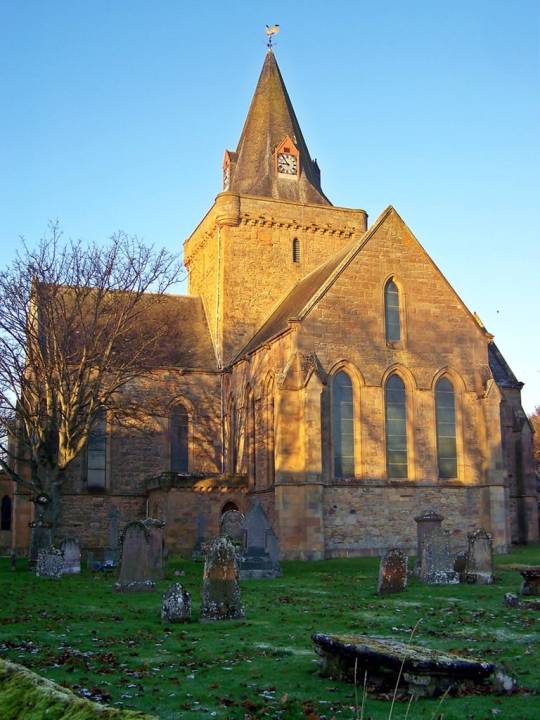


1st April 1245 saw the death in Scrabster Castle of Gilbert de Moravia Bishop of Caithness and the man who founded Dornoch Cathedral.
Gilbert de Moravia was the son of Muiredach, who in turn was son of Alexander de Moravia. The names suggest a noble family with roots in Moray, and it is thought that Gilbert was a cousin of William de Moravia, who became 1st Earl of Sutherland in 1230. Having chosen to pursue a career in the church, Gilbert spent a number of years serving as the archdeacon of the Bishopric of Moray. He was appointed to the position of Bishop of Caithness in 1222 by King Alexander II of Scotland.
As much as the Church had power back in the god fearing Medieval times the job of Bishop had it's risks. Gilbert's predecessor, Adam of Melrose, had been killed at his residence in Halkirk by farmers angry at a doubling in the episcopal tax levied on agricultural production, and Adam's predecessor had himself had his eyes and tongue removed by Harald Maddadsson, Earl of Orkney and Mormaer of Caithness, ironically for resisting increases of taxation on the peasantry.
Gilbert de Moravia owned estates in and around what is now Dornoch, and it was felt that it would be safer for him to move the seat of the diocese south. Gilbert therefore commissioned (and paid for) a Cathedral Church in Dornoch, as well as residences for ten canons. Gilbert himself was based at Skibo Castle, while spending some of his time in the more turbulent north at Scrabster Castle. His successors as bishop would establish a palace in Dornoch that has since evolved into Dornoch Castle.
Gilbert died at Scrabster Castle on 1st April 1245, and has since been said to have been "one of the noblest and wisest ecclesiastics the medieval church produced." He was buried at Dornoch, and his relics lay there until the wanton destruction during the Reformation.
Gilbert was the last pre-Reformation Scotsman to be canonised, and his achievement in erecting a building of the size and stature of Dornoch Cathedral in such a remote corner of the Scottish Highlands in the 13th century is truly remarkable.
26 notes
·
View notes
Text

Tintern Abbey, UK
#cottagecore#goblincore#goblin aesthetic#cottage witch#aesthetic#nature aesthetic#greencore#naturecore#forest#cabincore#gothic architecture#country gothic#rural gothic#ruins#religious history#history#architecture#dark academia
85 notes
·
View notes
Text
Women found temporary, often short-lived support for the notion of their innate equality with men as creatures of God in the heretical sects. Women in great numbers were active in organizing and proselytizing for the heretical sects and were visible among those suffering persecution and martyrdom. In this, they followed a pattern already noted in the history of early Christianity: as long as movements were small, loosely structured and persecuted, women were welcomed as members, given access to organizational leadership and shared authority with men. When the movement became successful, it became more tightly structured, more hierarchical and more male-dominated. Women were then relegated to auxiliary roles and to invisibility. This can be illustrated by the case of the Cathars.
The Cathar heresy flourished in the 11th century in the Languedoc and in the 12th century continued there and spread into Italy, the Rhineland and the Low Countries. Its dualistic belief system rested heavily on Gnostic texts and interpretations. Cathar doctrine taught that there were two distinct gods, one the creator of good, the other of evil. The material world was created by the evil god and its reproduction was by definition evil, hence Cathars rejected marriage and what they defined as the fruits of copulation, meat and milk. Since sin originated in Satan, Cathars held Eve blameless in the Fall; they saw her merely as Satan's tool. Following Gnostic doctrine, Cathars believed that Mary Magdalen had been the wife or concubine of Christ. They denied the doctrine of physical resurrection and held that resurrection referred purely to the soul. It was the evil god that created male and female; in the heavenly kingdom all creatures would be angels without earthly sexuality. These doctrinal differences from Catholic orthodoxy enabled Cathars to see men and women as more alike than different in the divine purpose and in their religious potential. Cathars believed that it was possible for human beings to come closer to perfection through ascetic living; those who succeeded were called perfecti; both men and women could reach that stage. In practice most people reached that stage only shortly before their death. While marriage was tolerated for the ordinary believer, it was forbidden to perfecti and perfectae. One reached that stage through the ceremony of the consolamentum, a sort of baptism by the laying on of hands. This meant that ordinary believers had a great deal of freedom in sexual matters during their lifetimes, since they were assured that after confession and receiving the consolamentum they would be perfected and saved. It is significant for the high status of women among the Cathars that, at least in theory, men and women could administer the consolamentum, although in practice few women ever did.
Catharism developed in the cities of the Languedoc, especially in Toulouse, the center of textile production and trade. Large numbers of women in the textile manufacturies became Cathars, as did male artisans and textile workers. Since the wages of female textile workers were much below those of male workers, even fully employed women could barely support themselves. To such women Catharism may have offered hope of salvation and practical communal support. The disproportionately large number of females among these heretics was noticed even by contemporaries.
A number of Languedoc noblewomen are known as leaders of Catharism and as perfectae. Phillipa, wife of the Count de Foix, led a convent of perfectae; one of the count's sisters was Esclarmonde de Foix, the "Princesse Cathare." After the death of her husband, she returned to the court of her brother, who built a house in which she, his former wife and other perfectae lived. In 1207 there was a public dispute between several bishops and representatives of Waldensians and Cathars. It is indicative both of her high status and of the limitations of her position that Esclarmonde participated in this public dispute on the side of the heretics and that the bishops reprimanded her and told her to go back to her spinning.
In the second half of the 12th century many Cathar women's convents were founded for unmarried daughters and widows of the lower nobility. These communities, led by perfectae, were under the spiritual guidance of a heretical bishop. While these Cathar women, like Catholic nuns, were active in education, spinning and weaving, they also proselytized and performed some religious ceremonies.
Constant persecution of the Cathars by the Inquisition made severe inroads in the strength of the movement. The violence of the Albigensian crusade of 1209 fell with particular brutality upon women. That year there was a massacre of heretic women and children in Beziers, and a year later, in Minerve, Cathars were given a choice of abjuring their belief or burning. One hundred forty male and female Cathars jumped into the flames. When crusaders started a reign of terror against the perfectae, the local population at times defended the heretics. In 1234 in several communities, armed women and other citizens prevented the arrest of female heretics. In 1243 women actively fought in defense of Montsegur castle, the last stronghold of the Cathars. During the siege almost all the noblewomen in the castle made a pact with the bishop to give them the consolamentum in case they were wounded and could not speak. The agreement was fulfilled when the situation in the fortress became hopeless. After the defeat, the military defenders of the fortress were allowed to retreat unharmed, but 200 male and female Cathars were burned on a great pyre, among them a number of well-known perfectae. After Montsegur the nobility largely withdrew from Catharism, and Cathar convents gradually disappeared.
By the end of the 13th century, Inquisition records no longer mention perfectae, which indicates that they lost their leadership position in the sect. In its declining phase Catharism attracted more adherents of the urban middle classes. Members of the middle class were drawn to Catharism because it allowed profit and interest, which the Church opposed. The Cathar women among this group appear in the record as among the faithful, but not as leaders. They supported the movement by raising funds, giving help to fugitives and doing missionary work. With the destruction of the Cathar convents the opportunity for women to exercise autonomous power and even political leadership disappeared. Many former perfectae joined the Beguines; others found refuge in Catholic convents. By the middle of the 14th century, Catharism had virtually disappeared. As would happen so often later in revolutionary and heretical movements, Catharism had seemed to promise women a role of spiritual and theological equality. Under the impact of persecution and of middle-class respectability this promise had given way to male dominance and patriarchal structures. The courage of the armed women defending their villages in the Languedoc against invading crusaders was only a singular outcry, throttled, and quickly forgotten.
-Gerda Lerner, The Creation of Feminist Consciousness
#gerda Lerner#female spirituality#female oppression#patriarchy#male violence#asceticism#catharism#women’s history#religious history#inquisition#heretical women
24 notes
·
View notes
Text
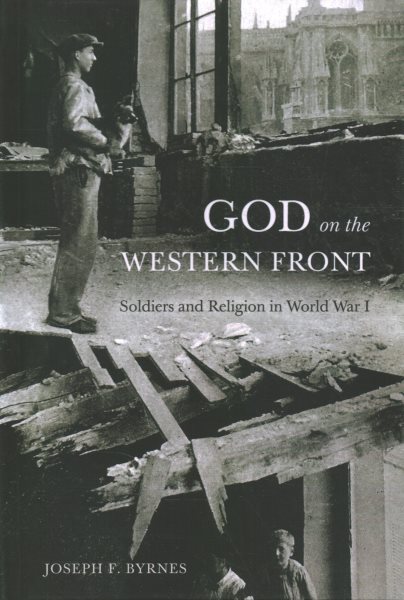
“Drawing on a wide array of sources to illuminate the soldiers' perspective on faith and morals at the service of warring states, Joseph F. Byrnes's insightful book explicates the inexplicable—that is, the confluence of God-talk and nation-talk among theologians, clergy, the faithful, and the irreligious during a major challenge to Western civilization itself.”
34 notes
·
View notes
Text
#15 History Shorts

Meet Desmond Doss, a soldier from the United States who fought in WW2, becoming famous for his pacifism during the war.
Desmond Doss counted as a conscientious objector, meaning someone who refuses to join the military or bear arms in the name of their conscience and own morals. It is most usually someone who doesn't want to hurt others.
For Desmond Doss this was because of his religion, a subgroup of Christianity known as the Seventh Day Adventist Church, which pursued pacifism.
Normally the United States would send conscientious objectors straight to jail, but there was a law covering an exemption for religious beliefs.
Desmond Doss became a medic instead, but was bullied by his fellow soldiers ruthlessly, especially for his diet which was also different due to his religion.
In the end Desmond Doss would be deployed in Japanese territory, and become a famous medic. The soldiers who hated him got over it after he saved their lives. His actions at hacksaw ridge were most famous.
He saved 75 men at hacksaw ridge alone, using a makeshift pully and gurney system, despite being shot four times while doing so.
Desmond Doss was awarded many medals, and lived to be 87, passing in 2006.
#desmond doss#history#us history#religious history#christianity#seventh day advntist#military history#ww2#hacksaw ridge#1940s#famous soldiers#medics
60 notes
·
View notes
Text
#did you know#religion#religious history#evolution#evolutionary biology#evolutionary anthropology#anthropology#human evoluttion#random facts#news article#gods and goddesses
29 notes
·
View notes
Text
On This Day In History
November 8th, 1901: Eight die in a bloody protest Athens, Greece, as anger erupts about translating the Christian Bible into modern Greek.
180 notes
·
View notes
Text
Napoleon as the black angel and Tsar Alexander the white angel
This is in an excerpt about Madame de Krüdener, a religious mystic during the Napoleonic era, from the memoir of Leon Dembowski, Moje Wspomnienia, Volume 1. (Source)
A bit about her career:
“Her literary activity was followed by various writings and pamphlets about humanity, in which she plunged into mysticism and presented herself as a prophetess. From 1806 to 1814, despite poor health and exhausted strength, she began to walk through Russia, northern Germany, the Netherlands and France, gathering listeners around her, handing out money and pamphlets.”
Her teachings:
“The principles of her teaching, both repeated in writings and disseminated by living words, consisted in implementing the principles of the early Christian Church and abandoning battles and wars. Moreover, the abolition of the death penalty, the return of freedom to subjugated nationalities and the strict exercise of Christian mercy completed this philanthropic system.”
In which she finds her ideas to be at odds with greater geopolitical events and social currents of her time:
“These sublime and beautiful thoughts, which probably once prevailed in beliefs, had few supporters in the era of Mme de Krüdener’s activity. All Europe seemed to be one camp, and Napoleon, on the one hand, and English intrigues, on the other, were completely destroying it. Everyone was thinking about the marshal’s baton, principalities, subsidies that Napoleon lavished, and while some were longing for constant conquests, others were thinking about how to break Napoleon’s yoke. Therefore, her apostolate, which could only reach places where the French eagles had not reached, did not really reach her convictions. Seeing that the path of persuasion would not reach her goal, she began to prophesy and predict the fall of the black angel (Napoleon), who would be struck down by the white angel (Alexander).”
What’s interesting is that the duel between Britain and France is diagnosed as the source of Madame de Krüdener’s problems, so she turns to a third party (Russia) to be the savior.
Her influence over Tsar Alexander I:
“As a result, Alexander wanted to know her, and it must be admitted that this partly corresponded to his inclination towards mysterious things, because many similar examples can be cited in the life of this monarch. […] Throughout all these years, Mme de Krüdener constantly worked on Emperor Alexander, having established influence mainly over his mind, pushing him towards mysticism, religiosity and abandonment of liberal principles.”
The author makes note that Madame de Krüdener and Tsar Alexander died around the same time.
Bold letters by me.
Pages 180-182
#Madame de Krüdener#Krüdener#Barbara von Krüdener#Leon Dembowski#Dembowski#Moje Wspomnienia#napoleonic era#napoleonic#Napoleon#napoleon bonaparte#religious history#first french empire#French empire#Russia#russian history#french history#19th century#france#history#imperial Russia#tsar Alexander I#tsar Alexander
22 notes
·
View notes
Text
Time Travel Question 26: Ancient History XIV and Earlier
These Questions are the result of suggestions from the previous iteration.
This category may include suggestions made too late to fall into the correct grouping.
Please add new suggestions below if you have them for future consideration. All cultures and time periods welcome.
#Dʿmt#Time Travel#Ötzi#Bronze Age#Prehistory#The Bible#Siddhartha Gautama#Jesus of Nazareth#Religious History#Early Humans#Ötzi the Iceman#Textiles#History of Textiles#Ethiopian History#Slavic History#Lechitic Peoples#Lost Literature#The Tully Monster#Iberia#Spanish history#Ancient World
89 notes
·
View notes
Text
Gundam Bael and Demonology - Iron Blooded Orphans Spoilers:
All of the 72 Gundam frames in Iron Blooded Orphans are named after demons found in various grimoires and demonological texts, most famously the Ars Goetia in the Lesser Key of Solomon. The Gundam Bael is especially important to McGillis Fareed's master plan in Season 2, but who is Bael in the Lesser Key and elsewhere?

The name "Bael" clearly connects the demon to the Canaanite deity Ba'al (an honorific term meaning something like "lord" usually used for the rain, fertility and storm deity Hadad), a deity that was something of a cultural and cultic rival to the worshippers of Yahweh in the area, a rivalry that's easy to pick up on if you read the Old Testament or stumble on fundamentalist conspiracy theories. Like many deities that were competing against Yahweh for followers, Ba'al became a demon in Judeo-Christian mythology and demonology.

In the Lesser Key of Solomon, Bael is said to appear as a man, cat, toad, or even a combo of such, and the Pseudomonarchia Daemonum of Johann Weyer says he will appear with the heads of all three (as you can see above in an illustration found in the Dictionnaire Infernal, another grimoire of note). Bael is said to have 66 legions of spirits under his command, and is often described as a "hoarsely-voiced king" with the power to make men invisible, etc.
Personally, I think IBO made a huge mistake by not making the Bael Gundam frame three-headed and grotesque, but that's just me.
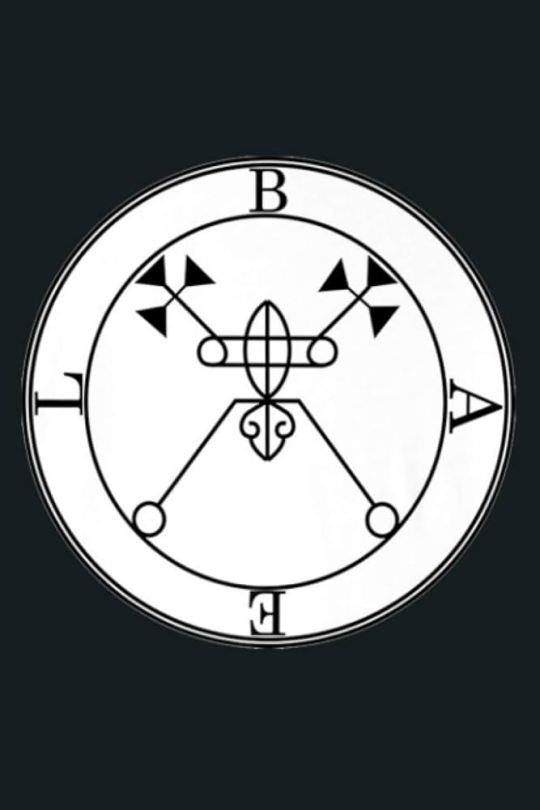
#gundam#mobile suit gundam#mech#mecha#demons#demonology#grimoire#lesser key of solomon#ars goetia#bael#iron blooded orphans#mobile suit gundam iron blooded orphans#science fiction#scifi#mythology#religious history
32 notes
·
View notes
Text
The Church in Castlevania
Okay, folks, I need to get this out of my system. Because this is always such a bad faith argument and... yeah, I just need to get that out there.
Now, I think most of us can agree that a lot of the game fans, who hate on the series, are just... looking for reasons to hate on it. Because in this time and age it is apparenting not just okay for people to say: "This wasn't for me" and move on. No, folks need to make up reasons why actually the thing they don't like is the worst thing ever.
In terms of Castlevania that comes with people idealizing the games (and quick reminder: I like most of the games, but... their storytelling is still very lackluster) and of course making up issues with that.
And one of the made-up hate reasons they found is how the church and religion are depicted.
They will claim: "Religion is a force of good and such an important part of the games and the Netflix series made religion a bad thing!"
And I am sorry. This is bullshit. Especially as someone who has been raised Catholic - aka the flavor of Christianity that Castlevania features.
Let me explain.
How the Games depict Catholicism
Now, I am no longer Catholic. Because of all the bullshit the Catholic church did to kids, and also their stand towards queer people. But I can tell you: If I still was Catholic, I would probably be offended at the games.
Look, this is how religious characters like priests and nuns look in the games.

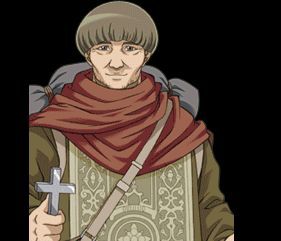
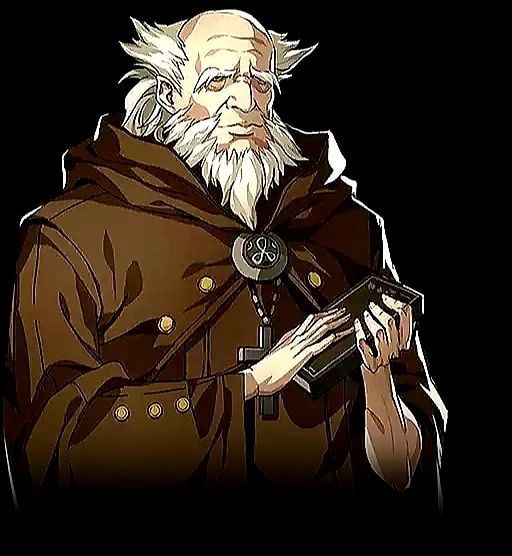
And, I am sorry, this is all bad.
Now, let me start with Tera, because she is probably the least offensive in there. Because her dress per se is alright. That is what a habit of a nun would look like. Most probably St. Thomas or Ursuline. But... there is one glaring issue: She is not wearing a head scarf. And that is an important part of being a nun. Like, really. nuns are usually allowed to drop the rest of their habbit. If you live somewhere with an abby (or go to a school where nuns are the teachers like me) you might see nuns running around in normal clothing... But never without their headscarf. The hair has to be covered. It is kinda part of the point.
Next up would be Vincent. And that dress is just like... Okay, I am gonna give them some points for giving him the right hair style that would made him Capucian. But the rest of his design? What is even going on there? That is not Catholic, that is just some fantasy priest design. It absolutely makes no sense. Even less so under the entire "well, technically he should be a monk" idea. The design is bad. Really bad.
And then we have the nameless Priest of Moonlight Rhapsody. Who... looks like you crossed a Capucian monk with a freaking druid?! Like... What?!
Not to mention, of course, that while Sypha in the games is not technically a nun (though she hides as one) she hides as one and also is said to have a close tie to religion, being a woman of faith and all of that.
Now, the CV3 design is not even that offensive.
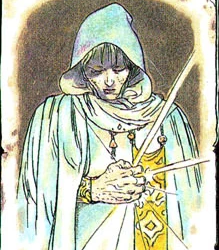
Like, sure, the blue is a bit weird, but... You know what? Hair is covered. The clothing is very conceiling. Yeah. It is not ideal from a Catholic point of view. So, that is okay.
But then we have the Castlevania Judgement design.

And... Do I really have to explain why this design is offensive on so many levels?
Like, you cannot just put a female character in this super sexy outfit, put so many fucking crosses on it and then go like: "Yay, religious character!"
Ironically the character who has the best religious design in the games is fucking Zead.
Outsie of that, let us look how religion gets depicted within the text... Well, no, let's not do that, because it isn't. Religion is not there in the text. At all. Because it is just a purely aesthetic thing that happens within the games. Charakters have religious affiliations, you will regularly find a chapelle in Dracula's castle with all the pretty stained glass and all that. But... It is not really there.
I think Alucard is a very good example of this. In Japanese artwork he gets depicted with a rosary or cruzifix from time to time. Like on the cover of Symphony of the Night.
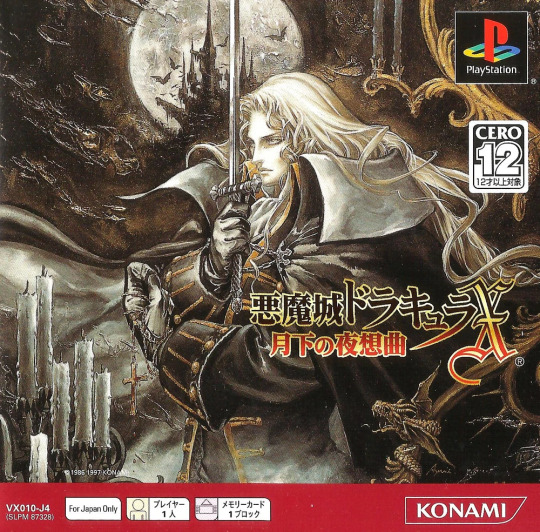
But there is nothing religious about how he acts. There is no prayers. Nothing in terms of how he speaks. Really nothing. It is nothing but an aesthetic.
And... that is basically the whole thing going on with the games.
The thing folks miss, when it comes to the depiction of Christianity in the games, is that the games are first and foremost Japanese games made by Japanese games for a Japanese market. And in Japan only 1.5% of all people are Christian. And to Japanese people, Christianity is a very exotic. It is about as exotic as Shintoism is to European and American people. So, the Christianity within the games is very much that. It is basically the same like an American game in which some characters run around with Kitsune masks, or where you run through a shrine with nice torii in front.
Is it offensive in a horrible way? No. Or not that much, and be it just because Christians over here love to feel offended, but actually rarely are because they are the majority. It isn't that bad. But is it a good depiction? No, definitely not.
How Religion gets portrayed in the Castlevania series
So, let me talk about how the series - both the one from 2017 and now Nocturne portray Christianity and how this is related to their historical contexts. Now, let me first get one thing out of the way. The bishop and the Catholic church.
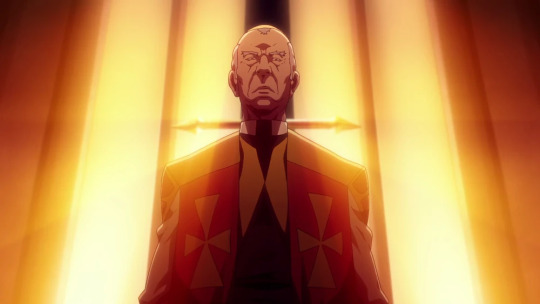
Yes, the bishop is clearly wearing the vestments of a Catholic bishop. Stylized, yes, but this is clearly Catholic vestments. And I have no heard several people claim that this is ahistoric because of Romania in general being mostly Eastern Orthodox.
But here is the big issue with that is, that... Yeah, Eastern Orthodoxy started to spread in Wallachia about a hundred years early. And it was from all we can say (look, there is little of written information that survived on the exact distribution). And I will not do it to you and myself to go deeper into the entire chasm between the Orthodox and the Catholic church.
Something that just needs to be said: The late 15th and the early 16th century in this area was a lot of religious turmoil. Which also had to do with the one historical detail that is not quite adressed in the show: Wallachia was just at the border to the Ottoman Empire, who tried to conquer Europe from there. (Again, the entire historical Vlad Tepes was so closely tied to that story. He got killed by the Ottomans in 1476.)
But that is also the aspect the show rightly brings in in one regard.
See, generally speaking one of the reasons that we got the Spanish Inquisition (which, again, was not about witches!) and the witch hunts just after the middle ages ended, so in the late 15th century was the conflict within the Church. There were suddenly several Christian religions and they were in conflict with each other and with that came a lot more push for the Churches to have power. The witch hunts were a way for them to clear up their power.
And yeah, that was a horrible thing they did. But... it is historically accurate. In fact, I would find it kinda offensive to look at the church of this time and show them as these nice people. Because that is kinda fucking with the pain and trauma of all those killed in the name of the church.

Now, Sala and his men are clearly Eastern Orthodox. While the clothing is not an exact match, the stuff they wear and also how they wear their hair and what not... That is Eastern Orthodox design.
Admittedly, the Priory is a but... bland for that. The Priory looks almost like Protestant. But than again it is a priory in a little town, so I guess it is somewhat understandable that it is not quite as fancy as Orthodox churches would be.
When it comes to the depiction of them... Well, I mean, they are not crazy because of their religion, they are crazy because somehow the night creature has brainwashed them.
That is honestly all I have to say.
And yeah, of course I should mention that we have of course Isaac there, who is a very religious character and who, in the very end, also gets depicted in a more positive light.
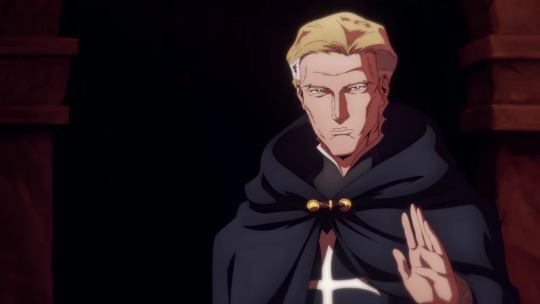
Now, compared to the original show Nocturne put in a TON MORE research when it comes to the depiction of the religious folks. Because while I do not consider the depiction in the original show as wrong, there is also not a ton of nuance and neither is there a lot of... details in there.
And compared to that we have now Nocturne and they just get the Knights Hospitaller so right. As well as their role within the revolution and all that. And... you know what? I am just gonna leave this blog here, where I went more into all of that.
But yeah, the entire thing is, that... in the games, Christianity is just an aesthetic. There is no substance to it. It is just to make the setting and the characters more exotic from a Japanese perspective. Meanwhile the show, which is mainly producted for a western audience, is more aware of the historical context it is set in and what role the Church took in it.
#castlevania#castlevania netflix#castlevania nocturne#castlevania 3#castlevania symphony of the night#castlevania moonlight rhapsody#religion#history#religious history#christianity#monks#priests#catholiscism
105 notes
·
View notes
Text




On 13th January 614, St Mungo or St Kentigern died , and was buried at his church in Clas-gu which later become Glasgow.
Our early saints were extraordinary men, they believed in an unknown God and by spreading his word changed history, whether you are a believer or not Saints like Kentigern, Coulmba and last weeks subject, Nachlan, all had a lasting effect on our country, reflected in the place names around Scotland associated with them.
Kentigern was born near Edinburgh, Scotland in the sixth century. His mother, St Enoch, was daughter of the King of Lothian. Her pregnancy was illegitimate, the result of rape by one of her suitors, whose identity she refused to reveal. Her father was so incensed, he had Enoch and her child cast adrift in an open boat on the Firth of Forth, expecting them to perish. The currents carried them across to the other side of the Firth, bringing them to land near the present town of Culross where they were offered shelter at the monastery of St Serf.
Serf took the boy under his special care, educating him and training him in the monastic life. When he reached manhood Kentigern left the monastery and journeyed across to the west of Scotland, finally establishing his own religious foundation on the site of the cathedral in Glasgow. Here he set about converting the area to Christianity. At a later stage he journeyed south into England and many parishes along his route still bear his name. Legend has it that he finally reached North Wales and spent several years there before returning again to Scotland, where he died c 614.
From the time of his death Saint Kentigern was venerated as Glasgow’s patron saint, and the cathedral of Glasgow was built in his honour. To this day his figure and the symbols associated with his legend make up the crest of the City of Glasgow.
The best known legends surrounding Glasgow's patron saint are told in the coat of arms of the city, as seen in the pic, the arms and the saint are forever linked.
There’s the tree that never grew,
There’s the bird that never flew,
There’s the fish that never swam,
There’s the bell that never rang.
Taking the symbols one by one, each refers to a legend during St Mungo’s life in Glasgow or his education before he came to found the monastery.
The tree is the first symbol in the rhyme and references a story from St Mungo’s early days. Legend has it that St Mungo was tasked with watching over a fire at the refectory in the monastery, while still a young boy. Mungo, though, fell asleep and some other boys, who were jealous of him, decided to put the fire out. When he woke up and found the fire extinguished, Mungo broke off some frozen branches from a hazel tree and prayed over them until they burst into flames, restoring his fire.
The bird that never flew also refers to a legend from St Mungo’s youth. It commemorates a wild robin, who was tamed by St Serf while Mungo was still in Fife. Sadly, the robin died, something which some legends attribute to the cruel actions of one of St Mungo's young peers, who were jealous of him. Desperate to make his friend and mentor, St Serf, happy again, Mungo took the dead bird and prayed over its body and was able to bring it back to life.
The third element, the fish that never swam, is one of the longest and most convoluted stories of St Mungo’s life. It involves the King of Strathclyde, Rydderach Hael, his wife Queen Langeoreth and a knight.
In the story, the King of Strathclyde gave his wife a ring as a gift. She, in turn, gave it to a knight - perhaps her lover - who almost instantly lost the artefact. King Hael demanded soon after to see the ring, threatening to kill the queen if she could not present him it.
The knight confessed what had happened to St Mungo, who sent a monk into the Clyde to catch a fish. When the monk returned, the fish was cut open and inside the ring was found. Some versions of the story go on to specify that this was the moment after which the King and Queen lived happily ever after.
The image of the fish which appears today is based on the seal of the Bishop of Glasgow, designed around 1271, which shows a salmon with a ring in its mouth.
Finally, the bell that never rang, is one story less explicitly linked to the saint. It is thought that the bell in question may have been given to St Mungo by the Pope. By the 15th century, the hand bell had become symbol synonymous with the city of Glasgow. Following this legend, in 1450, John Stewart, known as the first provost of Glasgow, let a bell ring out for his soul. The replacement bell, purchased in 1641, remains on display in the city.
Have a wee listen to Mother Glasgow, the Michael Marra song, Marra might have been a Dundee man, but he must have had a good understanding of Scotland's history, and indeed Glasgow's examples of the lyric include...
I dreamt I took a dander with St. Mungo
To try to catch a fish that couldnay swim.
The song ends and fades out to....
And the tree
And the fish
And the bird
And the bell
Let Glasgow flourish!
As I mentioned, the legacy of St Mungo still flourishes today in Glasgow, the first pic is a modern interpenetration of the saint on Glasgow High Street by the artist Smug, the second is another by Smug at the corner of George Street and High Street, it portrays Mungo as a child in the arms of his mother, St. Enoch, herself another patron saint of the city. The third pic is Glasgow's Coat of Arms, and finally we have the arms of the University of Glasgow, again using the legends symbols.
33 notes
·
View notes